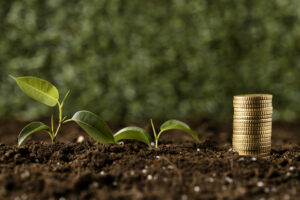Tree investment is becoming an increasingly popular topic among people. This is due to the growing number of individuals interested in this type of service, and with the media highlighting all the opportunities this field offers, more investors are emerging year by year.
This kind of business not only provides returns for those who invest in it, but also directly impacts our environment. Nowadays, there are numerous projects in this sector aiming to increase the number of trees and forests across Irish territory. However, despite its growing popularity, it’s common for many to still have several questions on the topic.
With this in mind, we have prepared a comprehensive guide on tree investment and all the benefits of entering this business today. Check it out!
What is Tree Investment?
Tree investment is essentially a way to make your money grow by purchasing plantations to increase the green area of a specific location. This type of business can be considered long-term and low-risk, which attracts a large number of people seeking more conservative investments.
The project’s aim is to benefit the environment by increasing the chances of planting more trees, which are essential for our well-being. Additionally, individuals who decide to participate in the investment also have an active voice in creating new forestry strategies and presenting the best paths to ensure the project has a promising future.
How Does Tree Investment Work?
Tree investment is a long-term process since forests grow at different rates and always need support to continue thriving and expanding. As they grow, investors can benefit from their appreciation and any income generated from harvesting trees for timber sales.
While timber is commonly used in construction, it can also be utilised for producing pulp and biomass. Additionally, it can be used in the manufacturing of furniture, packaging, and many other items we rely on daily.
As a result, tree investment can yield returns from three main factors: the biological growth of the crop, the increase in land value, and the rise in timber value. As the country’s GDP per capita increases, timber prices also rise, providing more advantages to investors.
What Are the Main Benefits of Investing in Forests?
One of the key questions when considering tree investment is the benefits this practice could offer. As mentioned earlier, being involved in such a project can bring financial benefits to the investor and also have a positive impact on the world. This is because this kind of initiative can influence various positive aspects for living beings.

Here are the main advantages of investing in forests:
Preserves Biodiversity
Afforestation has a significant impact on biological conservation, especially when native trees are planted. This is because they are responsible for creating new forest habitats where numerous species of animals and plants can thrive healthily.
Combats Global Warming
One of the major benefits of having more forests in the world is reversing the environmental damage caused by deforestation. These trees can absorb carbon dioxide, one of the major contributors to global warming, which has been increasingly affecting us for years.
Improves Air and Water Quality
Forests are considered natural filters, and by investing in trees, we contribute to the growth of these ecosystems. The main reason for this is that they capture sediments and absorb harmful pollutants, improving the quality of the air we breathe and the water used by people, preventing polluted rivers.
Air pollution is also reduced with afforestation, as trees help purify the air by removing gases and releasing oxygen through photosynthesis.
Conserves Rainwater
Trees are also responsible for conserving rainwater, which usually runs off and is not utilised. Dense vegetation allows water to infiltrate the soil, recharging groundwater, which feeds lakes, rivers, and mangroves, as well as replenishing subsurface aquifers.
Prevents Carbon Sequestration
Carbon sequestration is a process conducted by the Earth’s atmosphere, storing carbon in woody tissues, leading to climate changes. By planting a tree, it becomes responsible for this absorption through photosynthesis, providing a solution to the effects we experience from global warming.
Reduces Soil Erosion
Erosion is the wear on the Earth’s surface caused by running water and other natural factors. Although natural, this degradation can cause various damages to the area, and trees can solve this problem. They act as a protection for the soil and can absorb up to 250 litres of water, depending on their size.
Tree Investment Opportunities in Ireland
Ireland is a country constantly seeking ways to benefit the environment, and tree investment is one of them. With the project aiming to plant 100 million seedlings underway, there is a great opportunity for potential investors to contribute financially to this objective.


